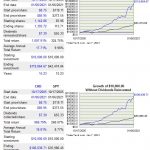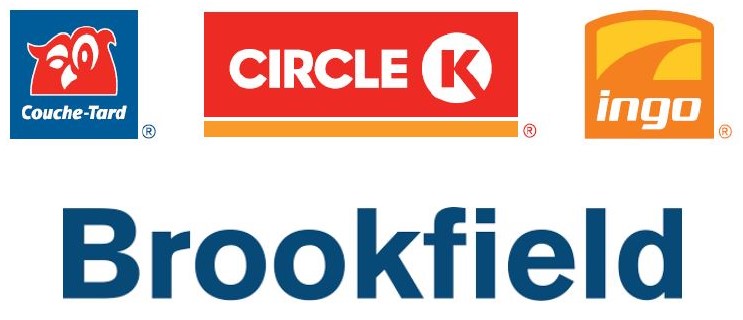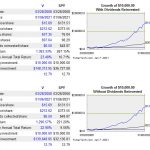Contents
In previous articles I have indicated that I am helping our daughter and her boyfriend (both in their early 20s) create investment portfolios that will aid them in achieving financial freedom at a relatively young age.
Summary
- I am working with young investors to help them avoid some of the investment pitfalls many investors make.
- Generating attractive investment returns is entirely possible if you focus on investing in high quality companies and your investment time horizon is long-term.
- While an investment is made taking into consideration the potential return, it is important not to lose sight that every investment carries an element of risk. Many investors neglect to consider the risk aspect of their investments or completely underestimate their risk tolerance.
Introduction
In previous articles (most recently here and here) I have disclosed that I am helping our daughter and her boyfriend create investment portfolios through the following types of investment accounts:
- Registered Retirement Savings Plan (RRSP);
- Tax Free Savings (TFSA);
- Non-registered.
Given their relatively young age, it is not unreasonable to presume some of the investments we make for them might carry a slightly higher degree of risk than that for older investors. I can not speak for other investors but I strongly suspect that many might not truly appreciate their risk tolerance. When market conditions are as what we have witnessed lately, an investor might say they are willing to tolerate a 20+% correction in the value of their investment. When market conditions turn ugly, however, and their investment corrects 20+% they may come to the realization that their risk tolerance is not what they thought.
Rather than take on an unreasonable level of the risk with the hopes of generating superior returns, we are focusing on investing in fairly valued high quality companies with strong management and competitive advantages.
The Most Powerful Investing Force
Albert Einstein is reputed to have said 'compound interest is the 8th wonder of the world. He who understands it, earns it; he who doesn't, pays it.' I have no idea whether Einstein actually said this but my wife and I can demonstrate to my daughter and her boyfriend that this 8th wonder is all very real. In fact, VISA (V) and Church & Dwight (CHD) are our two largest holdings and have both generated very attractive returns; shares are held in retirement accounts for which I do not disclose details.
On March 19, 2008, V went public and on March 28, 2008 I initiated a relatively decent sized position. Over the years I have reinvested the dividends and have periodically acquired additional shares. The following shows the extent to which as little as $10,000 has grown using the day I initiated my position (with and without dividend reinvestment); this does not reflect my additional lump sum purchases.
Source: Tickertech
On or about October 17, 2005, I initiated a position in CHD. Over the years I have reinvested the dividends and have periodically acquired additional shares. Once again, the following shows the extent to which as little as $10,000 has grown using the day I initiated my position (with and without dividend reinvestment); this does not reflect my additional lump sum purchases.
 Source: Tickertech
Source: Tickertech
Although both holdings have considerably outperformed the S&P 500, what I want you to note is the difference between the returns where dividends are reinvested versus not reinvested. The difference for V is ~$8,000 and ~$13,000 for CHD. These are insignificant amounts BUT keep in mind the figures reflected above are on the basis of only $10,000 having been invested! And...this difference in the 'ending investment' is attained merely by electing to automatically reinvest the dividends.
Recent Purchases
While V and CHD have certainly performed admirably over the years, I decided to increase our daughter's exposure to Alimentation Couche-Tard Inc. (ATD-b.TO) and Brookfield Asset Management Inc. (BAM-a.TO) - two other high quality companies. My reason for doing so is that both companies appear to be reasonably valued in an environment where so many companies appear to be overvalued. I decided to restrict my search for fairly valued companies to Canadian listed growth companies because US holdings in the type of account in which shares were acquired incur a 15% withholding tax on dividends.
Alimentation Couche-Tard (ATD)
ATD is the leader in the Canadian convenience store industry. In the United States, it is the largest independent convenience store operator in terms of the number of company-operated stores. In Europe, it is a leader in convenience store and road transportation fuel retail in the Scandinavian countries (Norway, Sweden and Denmark), in the Baltic countries (Estonia, Latvia and Lithuania), as well as in Ireland, and it has an important presence in Poland.
ATD has ambitions to grow in Asia and on December 21, 2020, it confirmed it has closed its acquisition of Convenience Retail Asia (BVI) Limited ('Circle K HK'). Circle K HK operates a network of Circle K-licensed convenience stores, with 340 company-operated sites in Hong Kong and 33 franchised sites in Macau.
The most recently compiled statistics I could find reflect ATD as having the second largest number of convenience stores worldwide (see here).
Further details about ATD can be found in its 2020 Annual Report (see here).
A highly informative November 2020 investor presentation can be accessed here. Looking at this presentation we see the extent to which ATD has grown through acquisition over the years (growth through acquisition has historically been ~70% and 30% has been organic growth). Going forward, management has indicated projected growth will be closer to 50% acquisition / 50% organic.
While the company has historically taken on significant debt for acquisition purposes, we see the extent to which the company manages to reduce its leverage in relatively short order (see page 27 of 42 of the November 2020 presentation). In fact, look at ATD's indebtedness ratios on page 5 of 12 in the November 24, 2020 Q2 2021 Earnings Release. As at the company's FYE2020 (April 26, 2020), the leverage ratio was 1.54:1. Two quarters later, this had been reduced to 1.13:1 as at October 11, 2020.
Brookfield Asset Management (BAM)
In my August 16, 2020 article I disclosed my top 30 holdings and the Brookfield Group of Companies was my 13th largest holding. I have not performed a similar analysis more recently than the middle of 2020 but a cursory review of my holdings leads me to be believe this group of companies is still within the top 20.
I have written a few BAM articles and have stated I like BAM as a long-term investment for several reasons...one of which is the fact sovereign and institutional investors place their trust and money with BAM for investment purposes. The management team is exceptionally strong and this is a company which can make sizable investments the likes few others can.
If you are unfamiliar with BAM you may wish to read the most recent Annual Report and Letter to Shareholders which can be accessed here under Reports & Filings / Financial Reports.
On September 24, 2020, the Brookfield Group of Companies held their Investor Day. I encourage you to review the material found here if you wish to learn more about BAM and the underlying entities and to listen to interviews with Bruce Flatt, CEO of BAM, which can be found here. Additional information can be found on the company's website.
Credit Ratings
I suspect a great number of equity investors invest in a company without giving any regard to the 'risk' aspect of their investment. As we know, leverage works wonders when all is going well but can be the demise of a company if excessive use of leverage is employed. This is why I look at the ratings assigned to a company's debt by the major ratings agencies. I also take into consideration that as an equity investor I am assuming even greater risk than debt holders. Quite frankly, if a company's debt is rated 'highly speculative', my equity investment is more appropriately classified as 'extremely speculative'. I wonder how many Tesla equity investors know that Moody's and S&P Global rate the company's debt as 'highly speculative!
In the case of the two companies in which we increased exposure we see that ATD's credit ratings are:
- Moody's: Baa2 is the middle tier of the lower medium grade
- S&P Global: BBB is the middle tier of the lower medium grade
and BAM's long-term senior unsecured debt credit ratings are:
- Moody's: Baa1 is the top tier of the lower medium grade. This rating was upgraded from Baa2 on September 30, 2019.
- S&P Global: A- is the lowest tier of the upper medium grade
These are investment grade credit ratings.
Dividend and Dividend Yield
ATD - Common stock dividend information can be accessed here. ATD does not maintain dividend history on its site and links from ATD's site take the reader to the TMX Group Limited website. On the basis of a $0.087/share/quarter dividend and a current share price of $42.88, the dividend yield is ~0.8%.
BAM - Common stock dividend information can be accessed here. On the basis of a USD$0.12/share/quarter (~ CDN$0.152616) dividend and a current share price of $49.39, the dividend yield is ~1.24%.
Clearly, an investment in these companies is not being made for dividend income purposes.
Final Thoughts
Our risk tolerance may differ from many other investors, and therefore, some may view the investments recently made for my daughter as being far too conservative. Based on my experience, assuming an elevated level of risk is not required to generate attractive long-term returns. Investing in high quality companies with the intent of holding these investments in perpetuity seems like a more prudent approach.
I continue to be of the opinion the stock price of many companies has become detached from the underlying fundamentals. I don't know when a correction will happen but I don't want to find myself investing in companies at 30+ times forward earnings because doing so is not a recipe for generating attractive investment returns. In my opinion, both ATD and BAM are high quality companies that are currently reasonably valued hence the reason for increasing our exposure.
Stay safe!
I wish you much success on your journey to financial freedom.
Thanks for reading!
Note: I sincerely appreciate the time you took to read this article. Please send any feedback, corrections, or questions to [email protected].
Disclaimer: I have no knowledge of your individual circumstances and am not providing individualized advice or recommendations. I encourage you not to make any investment decision without conducting your own research and due diligence. You should also consult your financial advisor about your specific situation.
Disclosure: I am long ATD-b and BAM-a.
I wrote this article myself and it expresses my own opinions. I am not receiving compensation for it and have no business relationship with any company whose stock is mentioned in this article.



